In this article, we explain the movements of the arms in the breaststroke. These movements are symmetrical and are performed with both arms at the same time.
The arm movements of the breaststroke can be divided into the following five phases:
- Glide phase
- Outsweep
- Catch
- Insweep
- Recovery
The following video illustrates this technique:
Now we will go into more detail about the different phases of the arm stroke.
Glide Phase
The swimming cycle begins with the glide phase:
1) The swimmer is in a flat prone position with the head in the water, and the face turned down.
2) The arms are stretched forward, the hands are together, and the palms are facing down.
3) The legs are fully extended and held together, with the feet point backward.
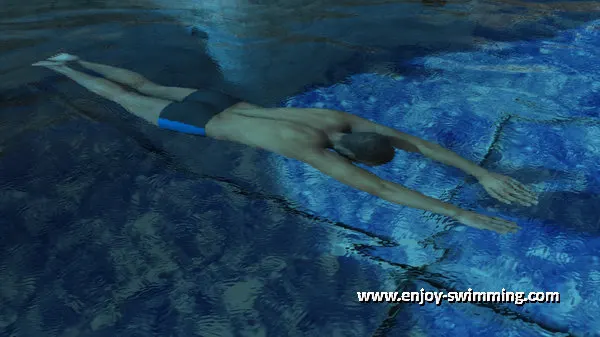
Outsweep
Now the outsweep of the arms begins.
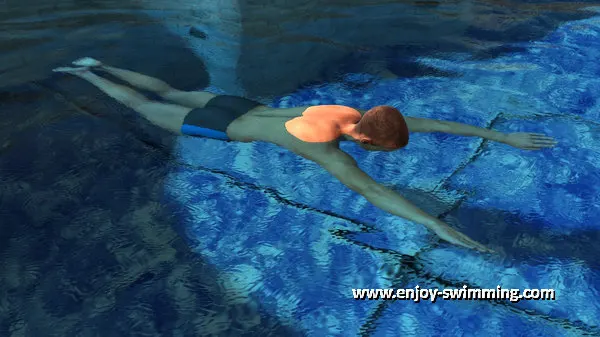
The palms turn slightly outward, and the arms slide sideways until the hands are shoulder-width apart. At the same time, the arms remain stretched and are held close to the surface. Seen from above, the body looks like a Y.
No propulsion is generated in this phase.
Catch
During the catch, the arms are brought into position to gain a good grip on the water and to be able to generate propulsion efficiently in the next insweep phase.
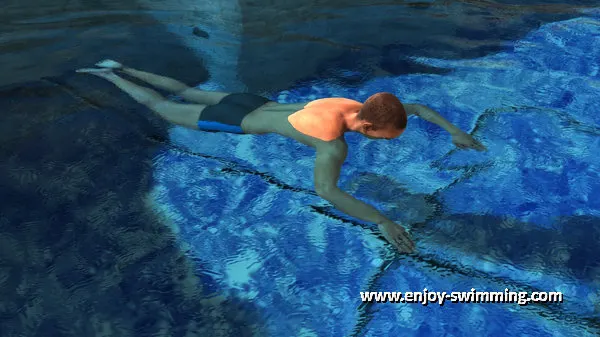
After bringing the hands shoulder-width apart with the arms extended during the outsweep phase, the elbows are now bent in the catch phase but still kept close to the surface. As a result, the forearms rotate downward and backward.
At the end of the catch phase, the hands and forearms should be in a line pointing downward, and the palms should be turned backward.
Insweep
After the arms have been brought into position during the catch phase, the arms are now brought backward, inward and upward towards the chest during the insweep phase.
This involves pushing forcefully against the water, which generates propulsion.
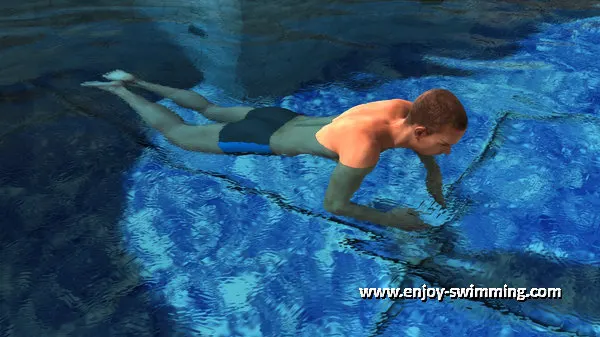
The insweep phase ends when the hands, or more precisely, the palms, face each other below the chest, and the elbows have been drawn to the sides of the body.
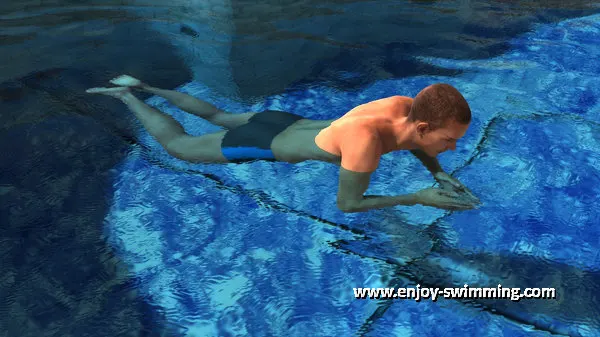
Recovery
At the end of the insweep, the hands were brought together below the chest. During the recovery, the arms are then extended forward and return to the initial position. At the same time, the palms are turned downward.
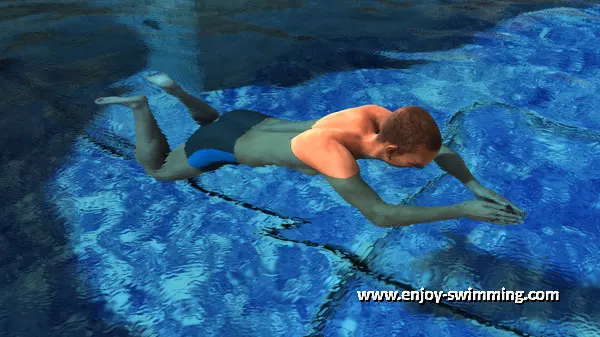
The arms are usually recovered forward just below the water surface. However, in competitive swimming, the recovery is sometimes made close above the water’s surface, which reduces drag.
After the recovery of the arms, the kick is completed, followed by another short glide phase before the stroke cycle starts again.
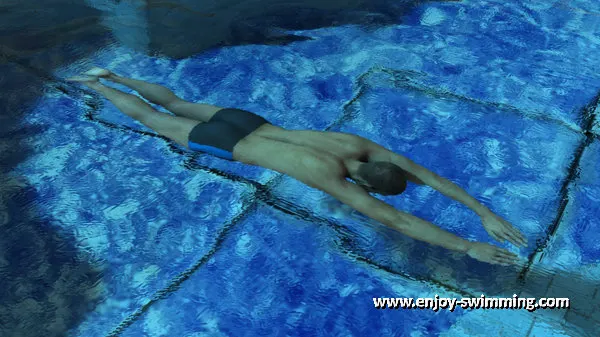
Synchronization of Arms and Legs
As already mentioned, the arm movements in the breaststroke are symmetrical and are performed simultaneously. Likewise, the leg movements are also symmetrical and are performed simultaneously.
The arm stroke is initiated at the end of the glide phase without using the legs. It is only during the arm recovery forward that the knees are bent, and the heels are pulled towards the buttocks.
The active propulsive phase of the kick, where the legs are brought back together, occurs only after the arms have been fully extended forward.
In breaststroke, the kick provides the most propulsion. Since the arm stroke occurs at the end of the glide phase and before the kick, the swimmer is prevented from coming to a standstill between two kicks.
Arm Speeds and Force Exerted Over the Stroke Cycle
The force exerted by the arms, as well as their speed, are not constant during the stroke cycle but depend on the particular phase of the arm stroke:
1) Minimal force should be exerted during the outsweep and catch. Otherwise, only water would be pushed to the side or down. Consequently, the arms are moved only at a moderate speed.
2) During the insweep, the arms should be moved quickly and with force to create as much propulsion as possible.
3) During recovery, the arms should also be moved quickly, but only with moderate force, as otherwise, only unnecessary drag would be created.
Related Pages
You may also be interested in the following articles that cover the breaststroke’s swimming technique:

Calvin
Wednesday 7th of June 2017
Just a question.
My shoulders and head do not seem to rise above the water as much as I noticed in the videos.
Why is it so?
Christophe
Sunday 11th of June 2017
Hmm. Could be that you don't recover your feet far enough to the buttocks, and so your hips and legs don't drop enough.
Could you have someone check out your underwater leg action?
andrew
Monday 10th of October 2016
I don't understand, how is the insweep propulsive since you are just squeezing water?
It is during the catch, you pull the water and hence push yourself forward.
Correct me if I am wrong.
Christophe
Monday 24th of October 2016
Hi Andrew,
During the insweep the arm moves inward but also backward, hence the propulsive forces.
moey
Wednesday 27th of July 2016
I think I have understood all phases of the stroke but the insweep. Do you push the water in with the forearms, squeezing it in?
Christophe
Thursday 28th of July 2016
Yes, squeeze in with your hands and forearms.
Partho
Thursday 9th of June 2016
Christophe - Awesome job... Such a good explanation in all your posts.
This is a great service that you are doing for everyone who is trying to learn/improve swimming or maybe just wants to know more about swimming job.
Wish you all success in life, God Bless!
Christophe
Saturday 11th of June 2016
Thanks Partho!
Nayyereh
Thursday 4th of February 2016
I can't open the video. Anyway thanks a lot. It is very useful for me.
Rosina
Saturday 19th of May 2018
Hmmmmm this helped me a lot, thank you!